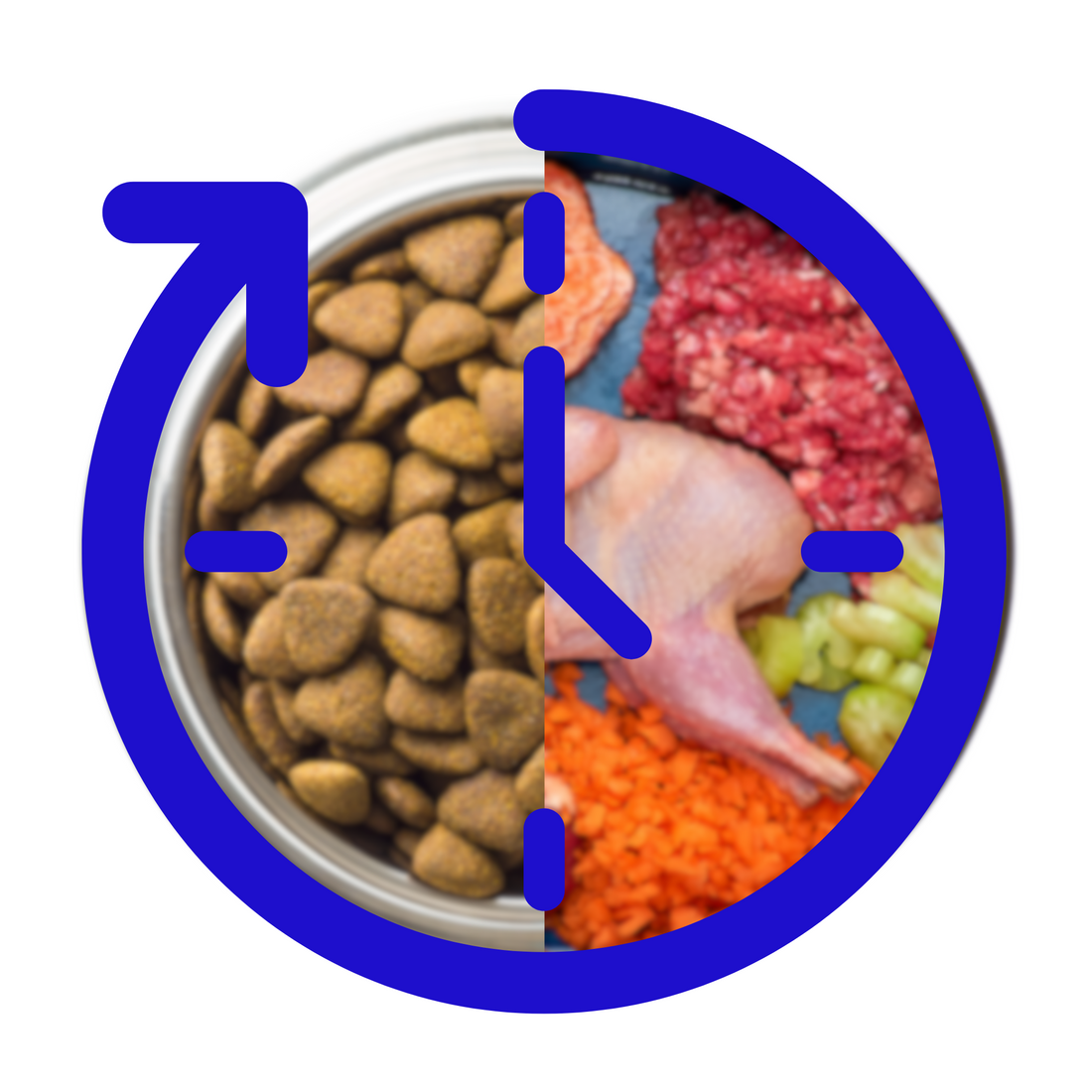
How to Transition your Pet to Raw Food
Share
If you've been reading up on raw food, maybe stalking our Instagram, and already understand all the amazing benefits to switching your pet to raw food, but if there's one thing stopping you, it's probably the transition from kibble to raw food. Maybe you've heard stories about how horrible the transition can be, pets getting sick, those who stop eating, those who get too fat, or too thin. Yes, the transition from one kind of pet food to another, vastly different pet food can offer some challenges, but you know the switch is worth it.
Besides, what if we tell you we can help you make an easy and stress-free transition without any upset bellies? With the right approach, it can be a smooth and stress-free process—for both you and your furbaby.
Why transitioning gradually is important
A gradual transition is very important to give your pet's digestive system time to adjust. Especially going from kibble to raw pet food, your pet will have to adjust to more hydration, less processed vegetables and bones, a higher level of proteins and fats etc. Jumping straight into a raw diet can cause upset stomachs, diarrhea, or even make your pet reluctant to eat. A gradual transition helps their body adapt, ensuring not only do they not get sick, but their bodies can take advantage of the better quality food from day one.
Start Small
As with every type of food, you should start by introducing a small portion of raw food alongside their regular kibble. A common starting point is:
-
Days 1–3: 75% kibble, 25% raw
-
Days 4–7: 50% kibble, 50% raw
-
Days 8–10: 25% kibble, 75% raw
-
Day 11 onward: 100% raw
Watch your pet for signs of discomfort or reluctance to eat and adjust depending on their needs. Some pets may need more time, especially if they’ve been on kibble for years.
Mix It Up
To be honest, we don't think your pet will have a problem with LOVING the taste of our raw food blends. While the taste may be no problem, there's potential for the texture or the richness to throw your pet for a loop. To help with the transition, try mixing it with a topper they love, such as dry treats (beef liver or chicken jerky), adding a small drizzle of meat broth, dog yoghurt or milk. This encourages them to give this new food a try if they're feeling hesitant.
Observe and Adapt
Signs that your pet is struggling with the transition includes diarrhoea, weird colours in your pet's waste, lethargy, vomiting, or refusing to eat, overly thirsty or being clingy/whingey. It's also important to watch their weight for less obvious signs. If they're happy, eating, playing, sleeping, toileting properly, all good!
Introduce Variety Slowly
We have many different flavours of raw pet food blends. When you're first transitioning, choose one of our flavours that are most closely aligned with your pet's usual food (we suggest the chicken blend as it's low-allergen, low-fat, and delicious). Once your pet is feeling happy with their new food, you can try our different varities of blends! The Wild Kangaroo and Beetroot blend is packed full of unique flavour and nutrients. Variety not only keeps meals exciting but also ensures a balanced intake of all the vitamins and nutrients they need to feel good.
Bonus Tips for a Stress-Free Transition
-
Consistency is key: Feed your pet the same amount of the same type at the same times each day.
-
Stay patient: Some pets may take a week or two longer to fully embrace raw food. Stay aware and be flexible with the process.
-
Keep mealtimes positive: Offer encouragement and avoid pressure.
Transitioning to raw pet food is going to be the best decision of your life, and we mean that! Following these few guidelines can ensure your pet is living a long and happy life.
